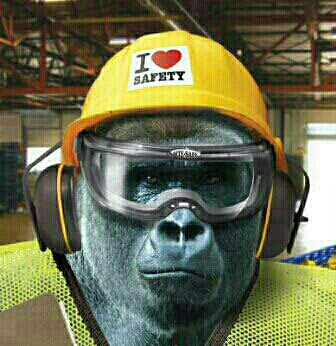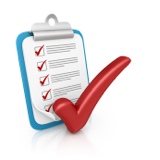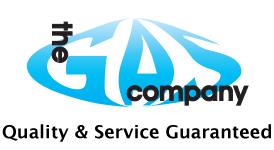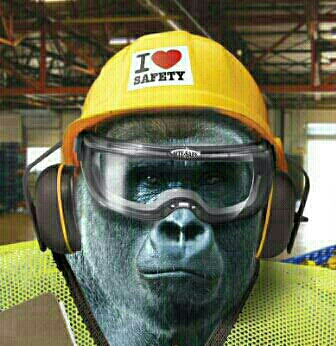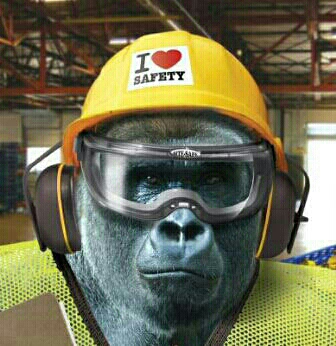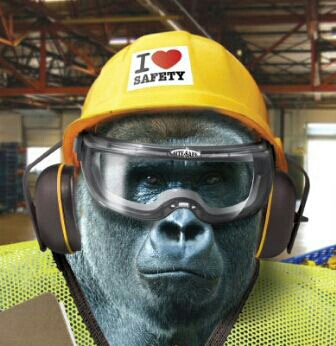Information
-
Client / Site
-
Conducted on
-
Prepared by
-
Location
-
Personnel
1.0 - PREVIOUS INSPECTION
-
1.1 - Has the last inspection been reviewed?
-
1.2 - Have all previous actions been completed?
2.0 - POLICY & INSURANCE
-
2.1 - Employers Liability Insurance on Display?
-
2.2 - Is the Employers Liability Insurance in Date?
-
2.3 - Companies H&S Policy on display?
-
2.4 - H&S Policy Signed or reviewed within the last 3 years
-
2.5 - H&S Policy Signed by Senior Management
-
2.6 - Copy of HSE poster on display or information provided by other means?
3.0 - STAFF/PERSONNEL
-
3.1 - Have personnel on site completed Cranfield Induction within the last 2 years - Check Records with reception
-
3.2 - Have all personnel on site booked in? Check with Facilities reception
4.0 - WORKING ENVIRONMENT.
-
4.1 - Are lighting levels satisfactory for safe working practices?
-
4.2 - Are temperatures comfortable and ventilation adequate?<br><br>Please specify if additional heaters are being used
-
4.3 - Are windows closed if heating/air conditioning equipment is switched on?
-
4.4 - Are welfare facilities including hand washing basins clean and accessible with hot running water?
-
4.5 - Is safe access and egress provided?
-
4.6 - Is there sufficient space for occupants?
-
4.7 - Are floors free of trip hazards?
-
4.8 - Do floors have a non-slip, even surface?
-
4.9 - Is general housekeeping good ie clean and tidy?
5.0 - WORK EQUIPMENT.
-
5.1 - Are machines/equipment fitted with secure covers/guards to prevent access to any moving parts/sharp blades/hot surfaces/electrics? Do guards conform to PUWER Regs?
-
5.2 - Are ladder/stepladder inspections in date? Check Sample against Inspection Records - Should be completed at least annually
-
5.3 - Can machines and equipment readily and safely be switched off?
-
5.4 - Is electrical equipment and lighting switched off if not in use?
-
5.5 - Are manufacturers instructions readily available?
-
5.6 - is work equipment maintained in a good condition and serviced in line with manufacturers instructions?
-
5.7 - Are there appropriate warning signs on the work equipment?
-
5.8 - Have operators been competently trained to use the equipment?
6.0 - ENVIRONMENTAL & WASTE CONTROL.
-
6.1 - Is there a company Environmental Policy on display and signed within last 3 years?
-
6.2 - Is there evidence of regular waste disposal to ensure no build up of waste?
-
6.3 - Is waste being stored in appropriate containers and properly labelled?
7.0 - ELECTRICAL SAFETY.
-
7.1 - Are plugs, sockets and leads visibly in good condition?
-
7.2 - Is the overloading of sockets (by the use of adapters etc) avoided?
-
7.3 - Are trailing cables avoided or covered/cable tied where necessary?
-
7.4 - Has portable equipment been Portable Appliance Tested (PAT) as necessary and labelled appropriately?
8.0 - LIFTING , CARRYING AND MOVING
-
8.1 - Are items stored sensibly with easy access ie heavy items used frequently stored on waist level shelves and heavy items used infrequently stored at low levels?
-
8.2 - Is mechanical equipment eg trolleys available for moving heavy/large loads and are they maintained?
9.0 - HAZARDOUS SUBSTANCES.
-
9.1 - Are COSHH/MDS assessments available for hazardous substances used/produced?
-
9.2 - Are hazardous substances labelled appropriately (name of material, hazard symbols, waste information?
-
9.3 - Are hazardous substances not in use stored in a COSHH container?
-
9.4 - Are hazardous substances disposed of appropriately?
-
9.5 - Are spillage procedures and suitable spill kits available with occupants trained how to use them?
-
9.6 - Are flammable substances contained in a flammable container and is that container adequately marked?
10.0 - PERSONAL PROTECTIVE EQUIPMENT (PPE).
-
10.1 - Is suitable PPE available and in good condition?
-
10.2 - Is there storage for PPE?
-
10.3 - Are the occupants trained in proper use of the PPE? Check training records
-
10.4 - Are instructions provided indicating when PPE is to be used?
-
10.5 - Are personnel wearing appropriate PPE?
11.0 - FIRST AID PROVISION.
-
11.1 - Are up to date posters displayed with names/locations/numbers of trained first Aiders?
-
11.2 - Are there sufficient numbers of suitably trained First Aiders?
-
11.3 - Are first aid boxes clearly marked and kept fully stocked with relevant items?
-
11.4 - Is Accident Book/Accident Records available?
-
11.5 - Have details of accidents been forwarded to Facilities?
12 - FIRE SAFETY.
-
12.1 - Is the Building Fire Safety Log Book up to date?
-
12.2 - Does the building have a current Building Fire Safety Monitor (BFSM)?
-
12.3 - Has a fire drill taken place within the last twelve months?<br><br>Check log book
-
12.4 - Are all fire exits and escape routes, fire alarm points and firefighting equipment clearly visible and unobstructed?
-
12.5 - Are Fire Extinguishers regularly checked? Ensure checks take place annually
13.0 EMERGENCY PROCEDURES.
-
13.1 - Do the occupants know the emergency numbers and assembly points?
-
13.2 - Are the emergency exit routes signposted eg in corridors etc?
-
13.3 - Is access to & emergency evacuation from the area appropriate for disabled persons?
-
13.4 - Has a Personal Emergency Evacuation Plan (PEEP) been completed where necessary?
14.0 - RISK ASSESSMENTS - GENERAL
-
14.1 - Are occupants aware of where to find risk assessments for the they undertake? (Ask occupants)
-
14.2 - Are Risk Assessments completed or reviewed within last 2 years?
-
14.3 - Are Risk Assessments available for all hazardous operations performed?
-
A Suitable and Sufficient Risk Assessment should ensure that:
* All significant hazards have been identified
* The risks have been properly evaluated considering likelihood and severity of harm
* Measures necessary to achieve acceptable levels of risk have been identified
* Actions have been prioritised to reduce risks
* The assessment will be valid for some time
* Actual conditions and events likely to occur have been considered during the assessment
* Everyone who may be harmed has been identified and considered.Identify the Risk Factors -
14.4 - Are Risk Assessments Suitable and Sufficient?
-
14.5 - Are occupants aware of where to find environmental aspect sheets for the area?
15.0 - RISK ASSESSMENTS - SPECIFIC
-
If noise is intrusive for most of the working day; if employees have to raise their voices to carry out a normal conversation when about 2m apart for at least part of the day; If staff use noisy powered tools or machinery for more than half an hour each day; if staff work in a noisy industry or noises are due to impacts such as hammering, pneumatic tools, explosives, THEN THERE SHOULD BE A RISK ASSESSMENT.
-
15.1 - If noise is an issue, has a Noise Assessment been completed, regularly reviewed and is suitable and sufficient.
-
Hand-arm vibration is vibration transmitted from work processes into workers' hands and arms. It can be caused by operating hand-held power tools, such as road breakers, and hand-guided equipment, such as powered lawnmowers, or by holding materials being processed by machines, such as pedestal grinders.
-
15.2 - If HAVS vibration is an issue, has a vibration Risk Assessment been completed, regularly reviewed and is suitable and sufficient?
-
Whole-body vibration (WBV) is transmitted through the seat or feet of employees who drive mobile machines, or other vehicles, over rough and uneven surfaces as a part of their job.
-
15.3 - If Whole-body vibration WBV is an issue, has a Risk Assessment been completed, regularly reviewed and is suitable and sufficient.
-
Manual handling relates to the moving of items either by lifting, lowering, carrying, pushing or pulling. But it's not just a case of 'pulling something' due to the weight of the item, although this can be a cause of injury. Injuries can be caused because of the amount of times you have to pick up or carry an item, the distance you are carrying it, the height you are picking it up from or putting it down at (picking it up from the floor, putting it on a shelf above shoulder level) and any twisting, bending stretching or other awkward posture you may get in whilst doing a task.
-
15.4 - If Manual Handling is an issue, has a Manual Handling Risk Assessment been completed, regularly reviewed and is suitable and sufficient?
-
Display Screen Equipment (DSE) is a device or equipment that has an alphanumeric or graphic display screen, regardless of the display process involved; it includes both conventional display screens and those used in emerging technologies such as laptops, touch-screens and other similar devices. If employees spend more than 2 hours a day working on DSE, a DSE Risk Assessment should be produced.
-
15.5 - If DSE is an issue, has a DSE Risk Assessment been completed, regularly reviewed and is suitable and sufficient.
16.0 - TRAINING, INFORMATION & INSTRUCTION
-
16.1 - Is H&S a regularly agenda item at staff meetings? Check evidence
-
16.2 Is there a training matrix and is it up to date? Check evidence of in date training or refresher training has been booked
-
16.3 - Are regular toolbox talks/Staff Briefings held? Check for evidence of attendance.
17.0 - OTHER ITEMS NOT COVERED ABOVE
-
When carrying out an audit it is important to consider wider aspects of the operations, try to look 3-Dimentionally, not just on those issues contained within this check sheet. Other items not covered by the contents of this checklist should be included below.
-
17.1 - Other Item 1
-
17.2 - Other Item 2
-
17.3 - Other Item 3
-
17.4 - Other Item 4
-
17.5 - Other Item 5
-
17.6 - Other Item 6
-
17.7 - Other Item 7
-
17.8 - Other Item 8
-
17.9 - Other Item 9
-
17.10 - Other Item 10
-
17.11 - Other Item 11
-
17.12 - Other Item 12
Sign Off
-
On Behalf of Contractor
-
Auditor's signature
